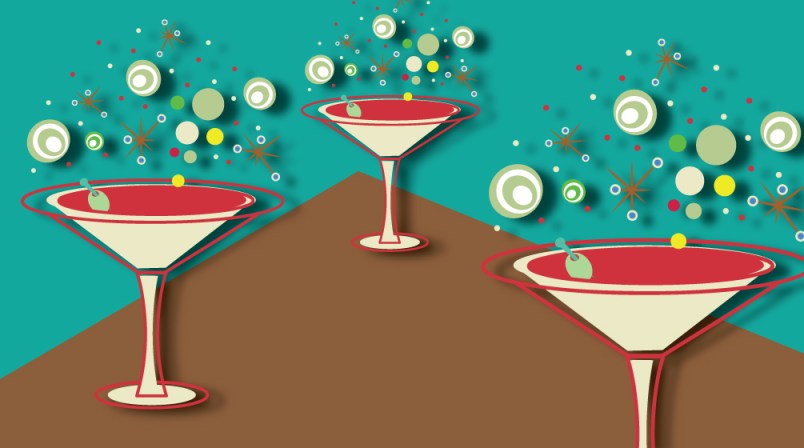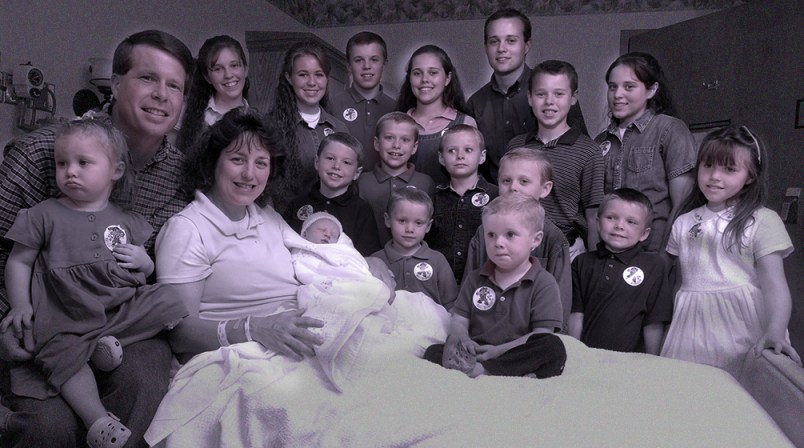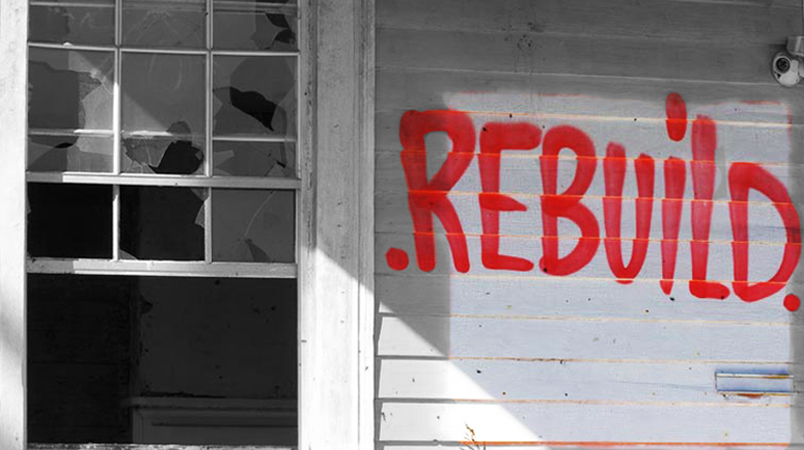Imagine you are overworked, sleep-deprived and keen to begin your weekend with a well-aimed salvo of intoxicating elixirs. Where will you execute this time-honored plan, American drinker of 2015?
If you live in a reasonably large metropolis, your watering-hole options might include: the artisanal cocktail emporium where the staff display a fondness for arm garters and moustache wax; a beer at the arrested development palace touting its vintage arcade games and Skee-Ball; or, say, a shotgun wedding between sushi and tequila (more Google results than you might think!).
Now imagine that you have none of those options. What you have is T.G.I. Friday’s. You can get a mudslide at Friday’s, or a frozen strawberry Daiquiri. Remember those sickly sweet, vomit-inducing staples of your college days, the shots with raunchy names like Slippery Nipple, Sex on the Beach or Redheaded Slut? You can have as many of those that you like. But everything else—from that Boulevardier made with local vermouth to everything on that fish-paired, artisanal-agave-spirits list—is gone.
Welcome to the Dark Ages of the American cocktail.
This was the sad state of play for thirsty Americans—all thirsty Americans, not just those stuck in airports or residing too far outside the shipping radius of Binny’s Beverage Depot—from approximately the late 1960s through the late 1990s.
For those three penurious decades, classic cocktails seemed lost in the mists of yesteryear, emerging only occasionally at film noir screenings or in the auction-catalog descriptions of rich dead folks’ glassware. Dessert-leaning mutations indistinguishable from milkshakes proliferated on drink menus. Artificial ingredients and flavored vodkas dominated the landscape, and amateurs of every stripe pushed misbegotten shots named after sex acts and vat-sized “-tinis” that made a mockery of that once-glorious suffix. For those who liked cocktails—that is, a balanced, high-proof libation mixed by dedicated professionals using high-quality ingredients, with attention to technique and detail—times were really tough.
Let’s talk about how we got there, in hopes that we might never return.

Mixology’s Dark Ages took root in the Depression. Forced into the shadows by the 18th Amendment and the Volstead Act, America’s drinking culture was without form, and void—and Prohibition was upon the face of the deep. When folks emerged in 1933, blinking and parched from thirteen senselessly dry years (and, let’s be real, from a lot of adulterated bathroom gin and jake walk), they found themselves faced with a daunting lack of options.
Prohibition had closed down breweries, reorganized distribution, shut off the taps from domestic distilleries and eroded supply lines from foreign sources. While Americans snuck into speakeasies and scraped together moonshine money, entire styles of décor, equipment and glassware had gone out of fashion and out of circulation. To cocktail enthusiasts it must have seemed—to crib from a famous wine drinker—like the best lacked all conviction, while the worst were full of passionate intensity. And everyone was full of lousy hooch.
To start with, the whiskey had gotten worse. Pre-Prohibition bourbon was pretty good, thanks to laws like the Bottled-In-Bond Act of 1897, which guaranteed bourbon drinkers a minimum standard of quality. (For those spirits labeled “bottled in bond,” that meant 100 proof liquor, aged at least four years in a warehouse subject to federal supervision.)
After Prohibition, Americans still had a powerful thirst for corn liquor—but the country’s rickhouses (bonded or otherwise) now held few barrels with which to slake it. Carry Nation may have taken an axe to America’s bars, but the Volstead Act deputized an army of Carry wannabes, and authorized them to wild out on millions of barrels of hooch.

Pictured: sadface
After the 21st Amendment, some folks barely noticed the whiskey shortage at all. Many developed a taste for the Canadian stuff that once poured illicitly over the border, and those tastes persisted as distillers of the 1940s, 1950s and 1960s started marketing “smoother” blended whiskies in the Canadian style. Canadian Club aficionado Don Draper, one generation removed from the Depression, provides an illustrative, albeit fictional, example.

Pictured: one military deserter, one Canadian casualty.
As Ted “Dr. Cocktail” Haigh writes in the 2009 edition of Vintage Spirits & Forgotten Cocktails, the blended stuff “consists of a little aged whiskey and a lot of grain-neutral spirits.” Grain-neutral spirits require no aging and are designed to be tasteless and odorless. Reliance on GNS allowed folks like Seagram’s to “double, triple, quadruple, or more the longevity of their whiskey stocks as well as the speed at which their product could be produced.” So plenty of whiskey was sold in the decades after the Depression, but the actual whiskey content in the whiskey was lower than ever.
Speaking of neutral spirits, the rise of vodka precipitated the Dark Ages: Its sales eclipsed gin in 1967 or 1968 (depending on which drinking legend you believe, Dale DeGroff or William Grimes), which meant that America’s base spirit of choice was suddenly the only one defined by law as “as tasteless and odorless as possible.”
Meanwhile, we lost the cadre of gatekeepers who once stood between subpar ingredients and the lips and livers of America. Like a sadistic Pied Piper in reverse, Prohibition drove away the professional bartending class, forcing titans like Harry Craddock and Fred Kaufman to ply their trade in exile in Europe or Cuba. With them went a whole tradition in mentorship behind the bar. By the Dark Ages, your local barkeep was more likely to be a half-interested student or artist, or someone making ends meet between professions—think of it as the Uberization of mixology.

Another casualty of Prohibition: a host of classic, European-style liqueurs and flavorings based on fruits, flowers and bitter herbs, many of which had been key cocktail components since before the turn of the 20th century (including, incidentally, two of the key ingredients in the 20th Century Cocktail). Many of those ingredients, like crème de cacao and crème de violette, are only now reappearing on American shores.
Postwar industrialization played its part, too. With name-brand convenience very much in vogue, and with the bottom line a constant concern, Dark Age bars were happy to dump real produce and pricey, perishable mixers (in the Dark Ages, everyone seemed to forget that vermouth spoils) in favor of pre-fab, citric-acid-heavy sour mix, “Tom Collins mix,” and a host of other chemical abominations. (These monstrosities are still an acceptable garnish in some establishments.)
But nature abhors a vacuum like I abhor an empty Nick and Nora. Since Americans weren’t about to stop drinking, something had to rush in after all those classic flavors, ingredients and barkeeps had been sucked out.
Enter Henry Africa and the Fern Bar.

It took a few decades after the 21st Amendment restored America to the bosom of its cups, but Africa (born Norman Hobday) was there to ease the cocktail’s transition from tragedy to farce.

“Rule 313: Never order a drink named after a part of the anatomy normally covered by underwear.” – David Wondrich
Drink origins are notoriously slippery and hard to pin down, but anecdotal evidence suggests that the Dark Ages gave rise to all of the following:
- Red-Headed Slut (Jägermeister/Peach schnapps/cranberry juice)
- Sex on the Beach (vodka/Peach schnapps/cranberry juice/orange juice)
- Slippery Nipple (Bailey’s Irish Cream/white Sambuca/grenadine)
- Buttery Nipple (Bailey’s/butterscotch schnapps—this version is also called a “Slippery Nipple”)
- Training Bra (white rum/triple sec/blue curacao/7-Up)
- Screaming Orgasm (vodka/Bailey’s/Kahlua)
- Blowjob (Bailey’s/amaretto)
- Nuts and Berries (Frangelico/Chambord/cream)
Henry Africa’s eponymous San Francisco bar, opened 1969, was by all accounts the grooviest damn thing folks had ever seen. Its décor was founded on several ingenious principles, all demonstrating that no one had his finger on the pulse of the 1970s like Henry Africa.
“Ecology” was all the rage, especially on the West Coast, and folks were even talking to their house plants. So Africa stuck ferns all over his bar. (As he’d admit 40 years later, the plants also helped cover up his first bar’s need for refurbishment.) Since nostalgia for “Victoriana” and the “gay 1890s” was in vogue, Henry Africa’s featured leaded glass and antique lamps.
And Africa figured out that 1970s drinkers were intimidated by the VFW halls, saloons and other windowless caverns where generations of Americans spent their happy hours. (Puritan nation that we are, we couldn’t let our neighbors see us in bars.) Female drinkers were especially skeeved out by windowless rooms. So Henry Africa put windows everywhere.
Martin Cate, proprietor of Smuggler’s Cove and a lecturer on the topic of Fern Bars (and thus perhaps the nation’s foremost expert on the subject) says that is where Africa’s true genius lay: “He made women feel safe.” Africa figured if he could make his bar into “a comforting, warm, inviting place” that looks like an airier version of “your grandmother’s living room,” then he could get women to drink there. And as any bar manager (Dark Age or otherwise) knows, getting women into a bar is the way to get men into a bar.
On one hand, Africa proved incredibly adept at this—perhaps because his timing was perfect. In a time after Free Love and before HIV, people began to treat happy hour more as hook-up time and less as a way to pound a few beers with coworkers between the office and home. Africa’s numerous S.F. bars became notorious for their ability to catalyze one-night stands.
On the other hand, Fern Bar drinks were terrible. “The worst thing about the era was probably the drinks,” Martin says. The typical Fern Bar specialty mixed inattention to detail and technique with a pervasive, palate-devouring sweetness. Take the Harvey Wallbanger, a 1970s abomination combining vodka (neutral), Galliano (heavy on vanilla), and orange juice (likely from a can). When Fern Bars reigned, the term “daiquiri” stopped meaning a simple shaken mix of light rum/lime juice/sugar, and became any frozen hodgepodge of rum, fruit, and/or fruit flavorings. Fern Bar “daiquiris” were more likely to feature ice cream than fresh lime juice.
Martin compares the flavor components of these drinks to “comfort food”—who doesn’t enjoy the taste of vanilla, oranges, or ice cream? But comfort food ceases to be comforting when it’s made poorly, or is the only item on the menu.
By the time of the first Reagan inauguration, things got really adolescent. To a drinker coming of age in the 1980s or early 1990s, the word “cocktail” was likely to conjure an image of something like the Slow Comfortable Screw. That’s vodka/orange/Southern Comfort/sloe gin, i.e. a screwdriver plus sloe gin and SoCo. If you’re over 35, you can say this next part with me: “Add Galliano, like a Wallbanger, and you get a Slow Comfortable Screw Against the Wall!” Siiiiigh.
It was as though an entire generation of drinkers had abandoned entire swaths of their taste buds. (No fewer than four of the ingredients in that SCSatW are sweeteners.) Drinks were sweet enough to mask the alcohol, and/or strong enough to mask the chemical tang of the artificial mixers.


“[The kamikaze] is one of the classic disco cocktails invented by barbiturated teenagers. It’s a senseless, infuriating concoction made of equal parts vodka, lime juice, and triple sec…There are no standards for the kamikaze. It has no particular attributes that would distinguish a good kamikaze from a bad one, like a dry martini or a tart gimlet. It exists merely to confer a little cache on these pimpled baboons.” — Heywood Gould, Cocktail (1984)
Kamikaze (emerged circa 1976):
- Vodka
- Triple sec (e.g. Cointreau)
- Lime juice (or, often, Rose’s Lime “juice,” a sweetened shelf-stable cordial
+
Harpoon (Ocean Spray marketing recipe, appeared on cranberry juice bottle circa 1966):
- Vodka
- Cranberry juice
- Lime juice
=
Cosmopolitan (original recipe, Cheryl Cook, 1985):
- Citrus vodka
- Triple sec
- Rose’s Lime
- Cranberry juice
→
Cosmopolitan (improved version, Dale DeGroff):
- Citrus vodka
- Cointreau
- Fresh lime juice
- Cranberry juice
In many places, Day-Glo shots and everything “-tini” still hold sway over happy hour. The aforementioned T.G.I. Friday’s opened its first location in 1965, at the dawn of the Dark Ages, and continues to license its recipe for milkshake-y mudslides to your local grocer. To crib from a famous bourbon drinker, at the mall the past is never dead. It isn’t even past.
Everywhere else, there are arm garters and Cocktail Weeks and more types of microdistilled gin than ever before.
The one drink beloved in both worlds is the Cosmopolitan, the Dark Ages’ hot pink answer to Charlemagne. Once derided as gimmicky, the Cosmo is no longer just the drink that launched a thousand bachelorette parties. It has emerged from its association with a certain HBO sex comedy to earn genuine respect among the country’s new cadre of professional bartenders, mentors and cocktail writers.
In the 2006 Mixologist: The Journal of the American Cocktail, Gary Regan called the Cosmo “the last true classic cocktail to be born in the twentieth century.” As early as 1998, Paul “The Alchemist” Harrington included it among 63 “Drink Classics Worth Imbibing First” in his hugely influential Cocktail: The Drinks Bible for the 21st Century. Contemporary titan Jeffrey Morgenthaler added his own Cosmopolitan paean just last week.
While men like these are embracing their love for a pink drink created by a woman (Miami’s Cheryl Cook, see sidebar), marketed to and popularized by women, ladies who cut their teeth on Cosmos have moved on to bourbon and single-malt Scotches.
In a way, the historical irony is complete. Who would have thought it would take a Carrie Nation to put America’s bars back together again?
Ken Walczak is a writer and an attorney in San Francisco. His work is strewn about the Internet in places like The Classical, deliberate LIFE, DrinkMe, and The Bold Italic. He should do a better job updating his own page at largerdirks.com.






